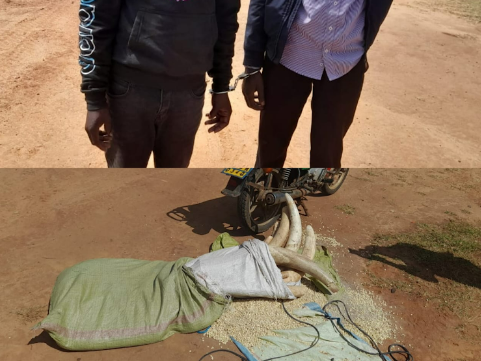The World Wildlife Crime Report 2024, published by the United Nations Office on Drugs and Crime (UNODC), highlights the persistent threat of wildlife trafficking to iconic species such as elephants and rhinos. Despite efforts over the past two decades at both international and national levels, wildlife crimes continue to pose a significant risk to these species.
The report underscores the need for stronger scientific evidence to inform interventions aimed at combating wildlife trafficking. While there are some signs of progress in reducing the impacts of trafficking on certain species, overall, the report suggests that wildlife trafficking is not substantially decreasing.
The third edition of the report delves into trends in the illicit trafficking of protected wildlife species, analyzing the harms and impacts of wildlife crime, identifying driving factors behind trafficking trends, and assessing the effectiveness of interventions. Previous editions were published in 2016 and 2020.
Seizure data included in the report reveal illegal trade occurring in 162 countries and territories between 2015 and 2021, affecting approximately 4,000 plant and animal species, with around 3,250 listed in the Convention on International Trade in Endangered Species of Wild Fauna and Flora (CITES) Appendices. These seizures involved millions of items and thousands of tonnes of wildlife products, highlighting the extensive scope of the issue.
“This illegal trade flows into a wide range of end use sectors, including food, medicine, live animal and plant keeping, and “luxury” goods,” part of the report says.
Appendix I of the Convention on International Trade in Endangered Species of Wild Fauna and Flora (CITES) lists species that are the most endangered, prohibiting international trade in specimens of these species except for non-commercial purposes such as scientific research.
Appendix II lists species that are not currently threatened with extinction but may become so without controlled trade.
Appendix III includes species regulated by a party seeking cooperation from other countries to prevent unsustainable or illegal exploitation.
According to the World Wildlife Crime Report 2024, rhinoceroses were the most affected species by wildlife trafficking, followed by pangolins, elephants, eels, crocodilians, parrots, cockatoos, turtles, tortoises, snakes, seahorses, and others. Among plants, cedars and other Spindale were most affected, followed by rosewood, agarwood, golden chicken fern, orchids, and others.
Kenya’s National Wildlife Census 2021 reported populations of various species, including elephants, black rhinos, white rhinos, lions, hyenas, cheetahs, wild dogs, and buffaloes. The report emphasizes the adaptability of wildlife traffickers, who adjust their methods and routes to exploit regulatory changes, enforcement gaps, and market trends. Strong, coordinated interventions across the trade chain are needed, supported by international cooperation and evidence-based approaches.
Corruption is identified as a facilitator of wildlife crime, undermining criminal justice responses, although wildlife crime cases are seldom prosecuted through corruption offenses. Addressing corruption alongside other interventions is crucial for effectively combatting wildlife trafficking.
“Greater consideration should be given to prosecution of those organising or enabling wildlife trafficking under laws directly addressing corruption, which may provide stronger investigative powers and potential for higher penalties than applicable under environmental legislation.”




